XDeep Stealth Tec vs Hollis Katana 2 Reviewed
The XDeep Stealth Tec and Hollis Katana 2 are the two leading sidemount BCDs currently on the market. Both BCDs excel in performance across various diving environments and activities. This in-depth review will compare and contrast the specifications, performance, options and design features to assist sidemount divers to decide which system is most ideal for their needs.
XDeep Stealth Tec & Hollis Katana 2: History
XDeep Stealth Tec
Released in 2015, the XDeep Stealth Tec immediately gained popularity across the global sidemount community. It had been preceded several years earlier by the Stealth Classic, but the wing design tended to balloon under heavier loads; which didn’t gain widespread popularity amongst cold-water sidemount diving communities.
Ostensibly a Mexican-cave-style sidemount design ideal for aluminum cylinders, the XDeep Stealth Tec design team finally solved the conundrum of providing sufficient wing buoyancy for heavier steel cylinders without causing the ballooning ‘beach ball’ wing effect that had previously plagued Mexican-style sidemount rigs.
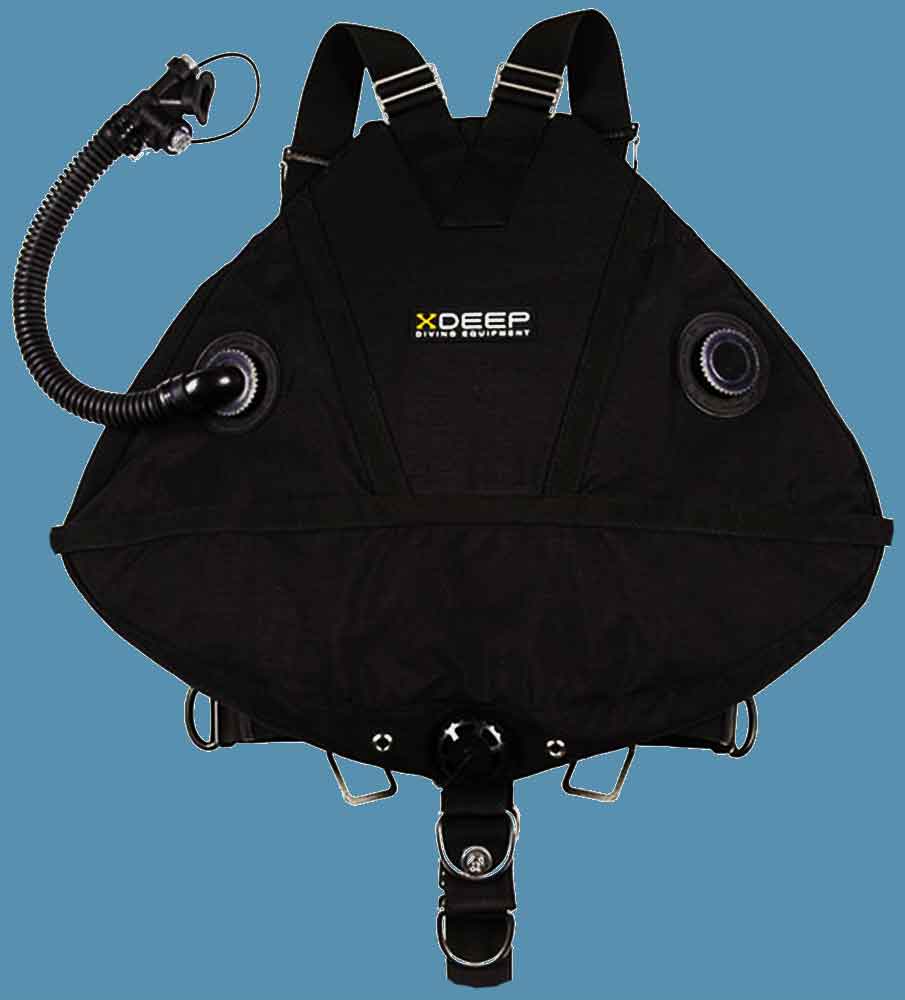
Prior to the Stealth Tec, Mexican-cave style systems had never gained popular approval amongst steel-cylinder diving, temperate and cold-water sidemount communities. Likewise, Florida-cave style systems had never managed to impress warm-water sidemount divers who needed specifical design functionality to optimize with aluminium cylinders.
In breaking that boundary between warm-water and cold-water diving optimization specificity, XDeep heralded a new phase in sidemount BCD design evolution.
XDeep Product Information Link
Hollis Katana 2
Hollis has a long background in sidemount BCD design; including the SMS100, SMS50, SMS75 and Katana 1.
Those earlier models strongly reflected Hollis’ roots and were variations upon the ubiquitous Florida-cave style sidemount design.
The Katana 2, released in 2020, reflected a departure from that trend; incorporating the modern principles of sidemount universality that XDeep had pioneered with the Stealth Tec.
For the first time since its release, the XDeep Stealth Tec had a worthy competitor.
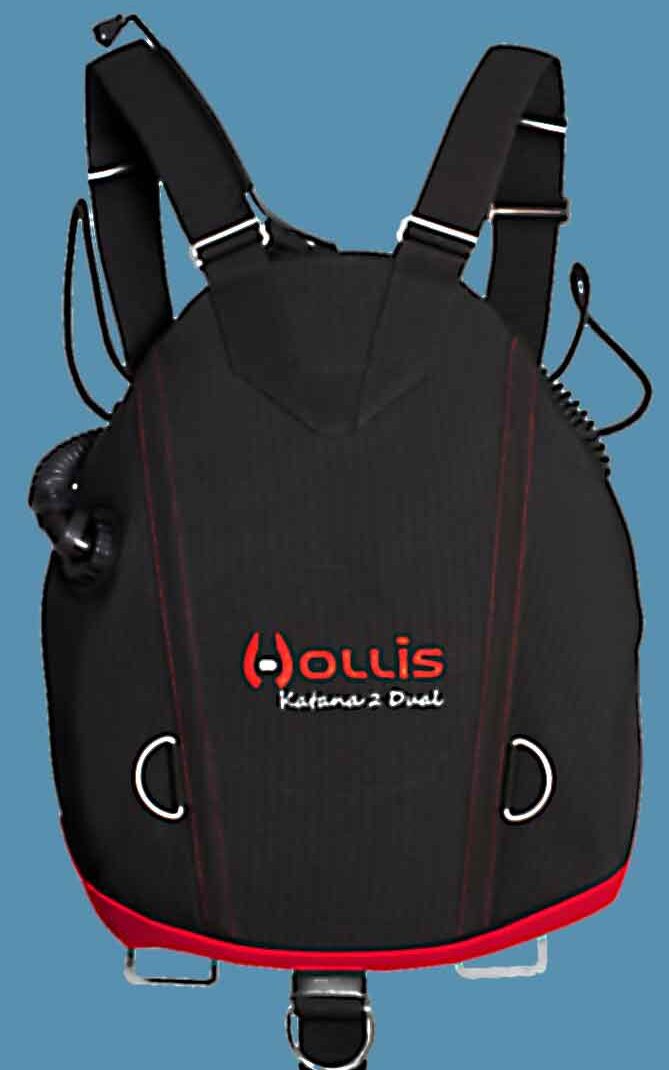
XDeep Stealth Tec vs Hollis Katana 2: Specifications
The XDeep Stealth Tec and Hollis Katana 2 are very similar in terms of specification, price and functionality. A prospective buyer has to look at the smaller details in order to decide which most exactly suits their needs.
XDeep Stealth Tec | Hollis Katana 2 | |
Manufacturer Price | $599 (2619 Polish Zloty) | $649.95 |
Wing Buoyancy | 19L / 42 lbs | 18L / 40 lbs |
Bungee System | Loop (6mm / 1/4″) 9m/29ft supplied | Loop (8mm / 5/16″) Pre-installed |
BCD Weight | 2.8 kg / 6.2 lbs | 3.6 kg / 8 lbs |
Primary Weight System | Spine pockets (velcro) | Spine pockets (velcro) |
Weight Capacity | 2x 1.5kg (3kg / 6.6lbs) 4x 1.5kg (6kg / 13.2lbs) 4x 2.5kg (10kg / 22lbs) 8x 1.5kg (12kg / 26.4lbs) | 4x 2.3kg (9.1 kg / 20lbs) |
Trim Weight Options | 2x 1.5kg (3kg / 6.6lbs) 2x 3kg (6kg / 13.2lbs) | 2x 2.3kg (4.5kg / 10lbs) (separate purchase) |
Wing Material | Cordura® 1100 dTEX | 1000D Cordura |
Dual-Bladder Option | Yes | Yes |
Harness Style Option | Y | Y or H |
Adjustable Spine Length | Yes, soft webbing strap | Yes, velcro (Quick Fit System) |
Shoulder QR Buckles | Optional | None |
Crotch Strap | Standard 2″ Soft Webbing Quick-release (optional) | Standard 2″ Soft Webbing |
Waist D-Rings | 2x 60mm + 2x rubber 2x sliding metal (optional) 2x 30mm (optional) | 2x 30mm 2x fixed bent 60mm |
Rear Cargo Pouch | Standard (optional) Expandable (optional) | Expandable (separate purchase) |
Buttplate | Optional | Optional (separate purchase) |
Colour Options | 12 main panel colours 10 side-panel colours 2 edge colours | Black+Red Black Ltd Edition |
LPI Hose | 34cm / 40cm / 48cm | Flexible oval-type |
Also Supplied | Canister light plate Weight adaptor plate 1m of 3mm bungee LPI boltsnap Waistbelt triangle retainers 2x Waist bungee boltsnaps | Chest strap 2x Quick Links LPI boltsnap |
Other Options | Wing embroidery | None |
XDeep is, first and foremost, a specialist sidemount BCD manufacturer. That focus has enabled them to offer a much wider range of options and customization with the Stealth Tec. If ordering directly via their website an online customization process allows buyers to decide between a plethora of options in a step-by-step design process.
In contrast, there are no real options when ordering a Hollis Katana 2. You can decide between a single or double bladder wing. There is a limited edition all-black model available. You can purchase additions like a sidemount pouch or trim weight pockets as separate items.
XDeep Stealth Tec vs Hollis Katana 2: Wings
With only a 1kg/2lbs difference in wing buoyancy, there’s little to differentiate between the Stealth Tec and the Katana 2. Both systems retain the majority of wing buoyancy in the lower section of the BCD; making the wings optimal for aluminium cylinder diving.
Whilst being optimized for aluminium cylinders, both wings have more than sufficient lift to deal with heavier steel cylinders and/or the loads carried during full trimix-level or exploratory cave diving. Both wings will also easily support sidemount CCR systems.
The XDeep Stealth Tec retains a majority of its buoyancy in the lower half of the wing; with only small side panels containing gas on the upper half. The upper central section of the wing is a reinforced nylon plate that does an excellent job of providing protection from abrasion and puncture. The Hollis Katana 2 wing is similarly designed.
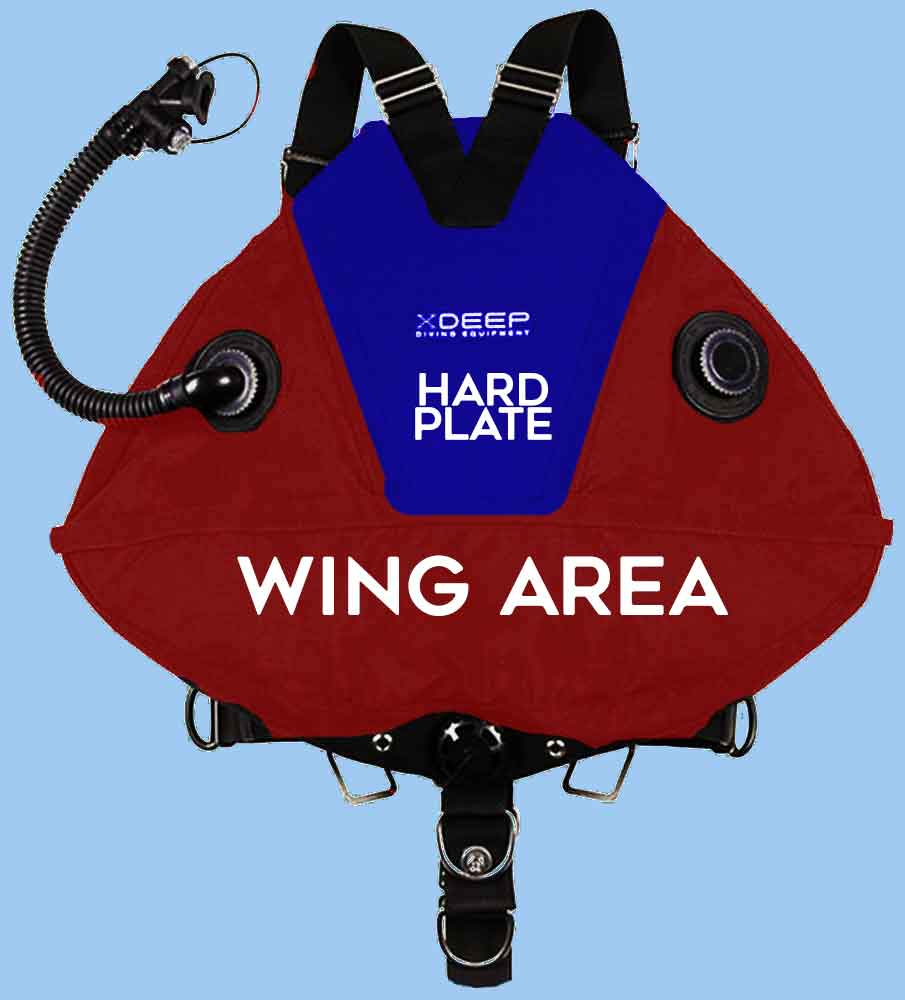
Dump-valves
The location of dump valves differs on the XDeep and Hollis wings, which can be a major consideration for purchasers, depending upon their dive habits, proficiency level and personal preferences.
The Katana 2 has two dump valves; one on the inner right-side wing and the other behind the divers’ neck; operated by an extended dump cord that routes down the left shoulder strap. Positioning the wing dump on the inside wing is less ideal in allowing efficient gas release, but adds further protection to the dump valve than being exposed on the outside.
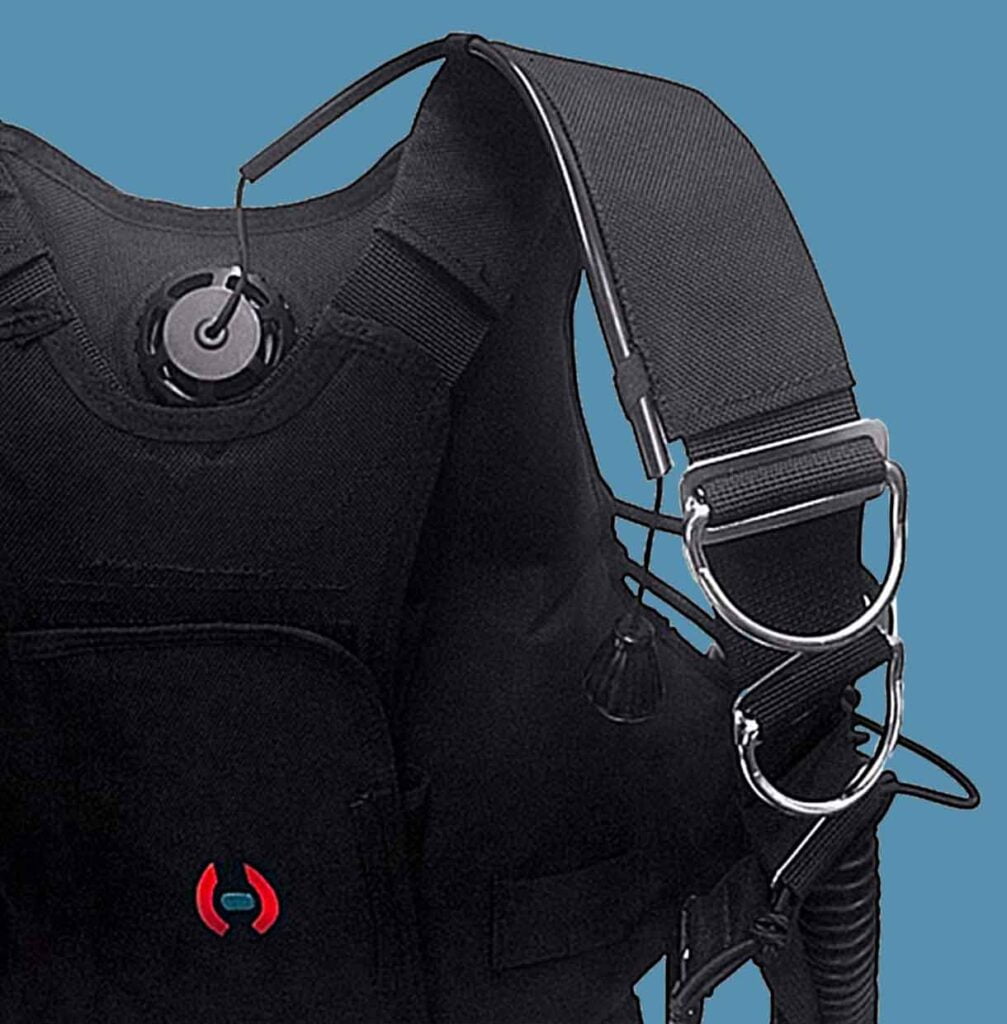
It is far less intuitive to locate and isn’t situated to vent gas directly up and out of the wing. I might try and justify that positioning as a means to better protect the dump valve from abrasion and impacts, but if it were outside of the wing, it’d still be protected between the divers’ torso and the cylinder.
Shoulder-mounted dump valves or low-pressure inflator options have been a ubiquitous trend in Florida-style sidemount design tradition; starting with the Armadillo A2 and featuring on the vast majority of commercial rigs sold subsequently over the years.
There isn’t much justifiable necessity for that feature and multitudes of capable sidemount divers manage perfectly well with rigs that don’t offer it. Upper-torso dump valves certainly would have some appeal to less experienced divers; becoming useful when the diver doesn’t have habitually consistent horizontal trim, or as a simple familiarity feature when first crossing over from backmount scuba equipment.
I was initially surprised to see a shoulder-mounted dump valve on the Katana 2; given that it was directly inspired by the XDeep and was a transition towards Mexican-cave design principles. My first assumption was that it merely continued a design tradition; perhaps more motivated by regional consumer expectation than by functionality assessment during a blank-slate design process.
However, the inclusion of a shoulder-mounted dump was explained by Edd Sorensen, who had a major contribution to the Katana 2 design process. Specifically, Edd noted difficulties reaching the XDeep Stealth lower dump valve when using the K.I.S.S. Sidewinder CCR system. On that CCR unit, dual scrubber canisters sit above the sidemount cylinders on each side; which can impede arm mobility to the rear body.
Edd Sorenson explains KISS Sidewinder CCR considerations in the Hollis Katana 2 design process:
Whilst perfectly understandable, I do question a design emphasis that emphasizes functionality for a tiny niche of potential users on a specific CCR unit to the detriment of a majority of users who’d benefit from a lower-wing dump valve; especially warm-water sidemount divers who are using aluminium cylinders.
Buoyancy effect on trim using Mexican-style sidemount systems
The underlying issue is that Mexican-style sidemount rigs retain the majority of wing buoyancy over the lower spine. Positive buoyancy in the wing exerts a force that tries to rotate the diver into a leg upwards position. The lower wing is drawn into the highest position relative to the diver as their wing buoyancy pulls the lower torso upwards.
In Florida-style rigs, full torso-length wings enable the diver to shift gas around the wing to determine their trim. Positive wing buoyancy can be directed wherever the diver desires it to retain trim. That option is not available, or significantly limited, with Mexican-style wing designs where little or no wing volume exists above the mid-torso.
The rotational buoyancy force is also modified, even nullified, when using substantially negative steel cylinders. It is far more prevalent when using aluminium tanks as they become depleted towards the end of a dive and greatly exaggerated when additional aluminium cylinders are carried for technical sidemount dives.
Accurate weighting, principled configuration and proactive buoyancy control deal with this issue under routine circumstances. Positive buoyancy on the lower body is managed to prevent it from becoming overwhelmingly forceful against the divers’ trim. It’s a process of sidemount learning that most warm-water sidemount divers can intimately relate to.

A far bigger problem arises if the diver experiences an LPI free-flow into their wing. In a Mexican-style sidemount system, that has the instant effect of violently pivoting the diver feet upwards.
This is a time-critical emergency because every second of delay adds further gas into the wing, accelerates ascent and allows expansion of the gas already within the wing. There is a point, quickly reached, where the situation becomes unrecoverable and an uncontrolled ascent becomes inevitable.
To prevent that spiralling catastrophe, it is essential for the diver to be able to dump gas from the wing very quickly. The time that action requires is primarily determined by the location of their dump valve.
A shoulder-mounted dump valve demands that the diver first has to fight against increasingly powerful rotational buoyancy forces to get themselves head upwards. It is not a battle that one can assume they’ll win, or achieve quickly enough. Especially so less experienced or physically strong divers.
In contrast to the Katana 2, the XDeep Stealth only has one dump valve; situated on the lower bottom of the wing. It was a very intelligent and safety-calculated decision; reflecting the buoyancy dynamics I have just described.
The XDeep dump valve is ideally situated for exactly that scenario; it will be the highest point of the wing and most efficient for instantaneous gas release without necessitating the diver to physically manoeuvre themselves first.
Additionally, the dump valve is ambidextrous; enabling the diver always to maintain buoyancy control whenever one hand is busy. Gas can be released effectively without deviating from flat horizontal trim or needing any lateral or vertical rotation of the body to move the dump valve higher relative to the wing.
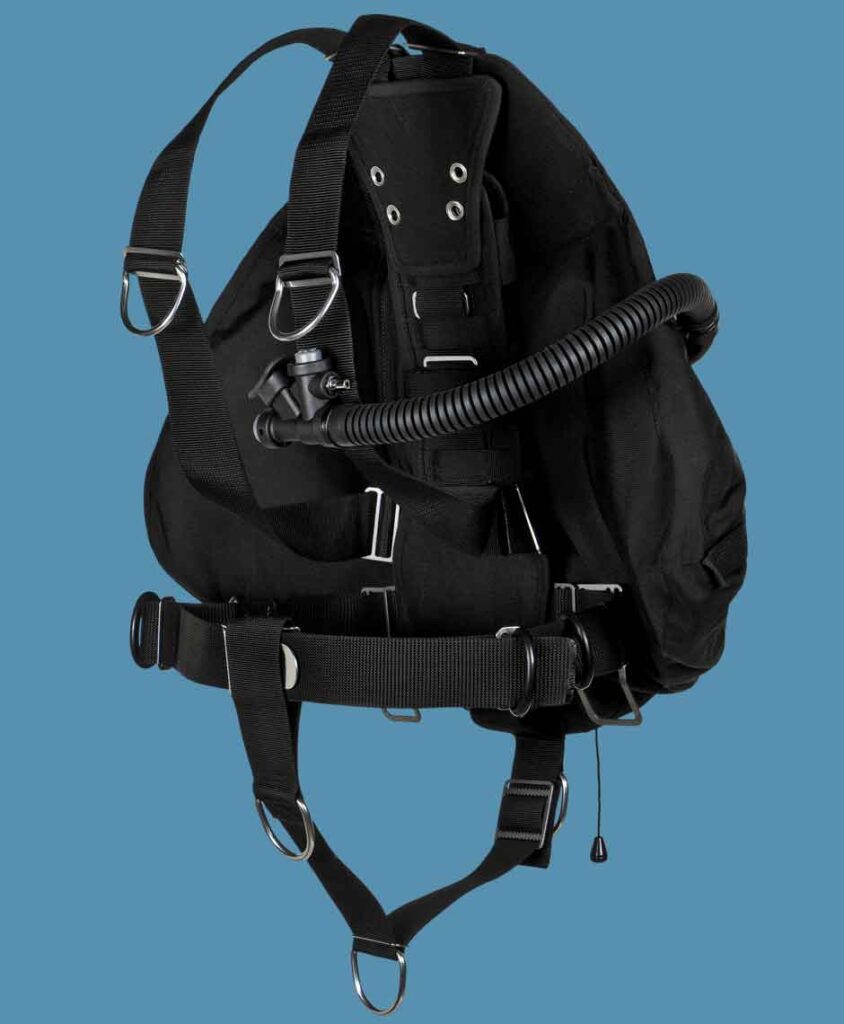
It is clear that XDeep prioritized safety and real-world functionality over convenience and novice-diver familiarity with the dump valve placement. In doing so, it does demand more fundamental diving skill proficiency from the user; especially the ability to retain horizontal trim when diving.
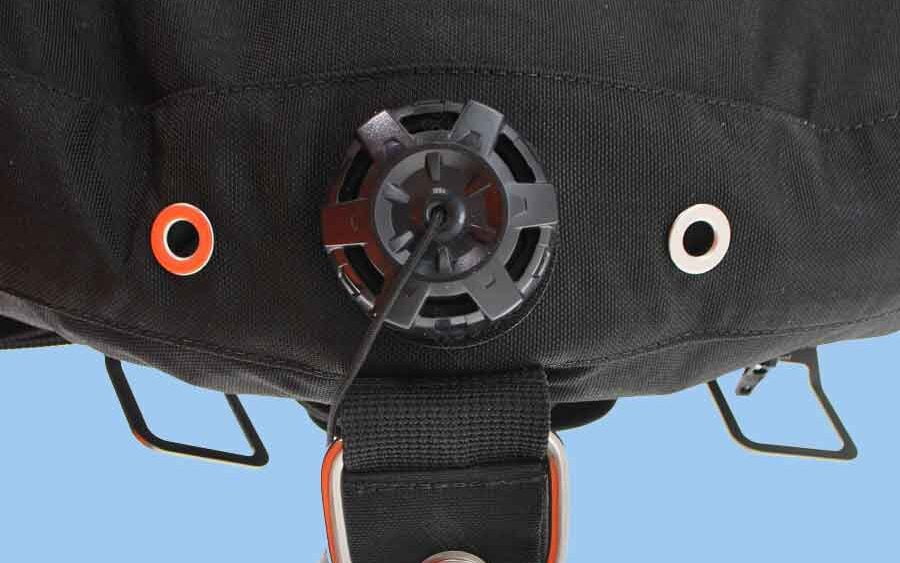
Low-pressure inflators (LPI)
Both systems feature low-pressure inflators that route from the left side of the wing. This is typically ideal for any orthodox sidemount regulator configuration and enables clean hose management. Routing from the left side ensures that the short-hose regulator is primary; delivering gas for both wing inflation and breathing whenever the right-side long hose cylinder is removed or gas is donated to another diver. Both BCDs also have blank LPI connections on the right side of the wing, allowing the LPI to be transferred to the other side if divers find a benefit from a non-standard configuration; that can be useful for some sidemount CCR setups.
XDeep and Hollis have different strategies when it comes to the low-pressure inflator (LPI) style. The Stealth Tec is sold with three different length options (34, 40 & 48cm) using an inflexible corrugated hose. The purchaser has to determine which length offers them the most streamlined configuration; whilst also ensuring they have sufficient length to orally inflate their wing.
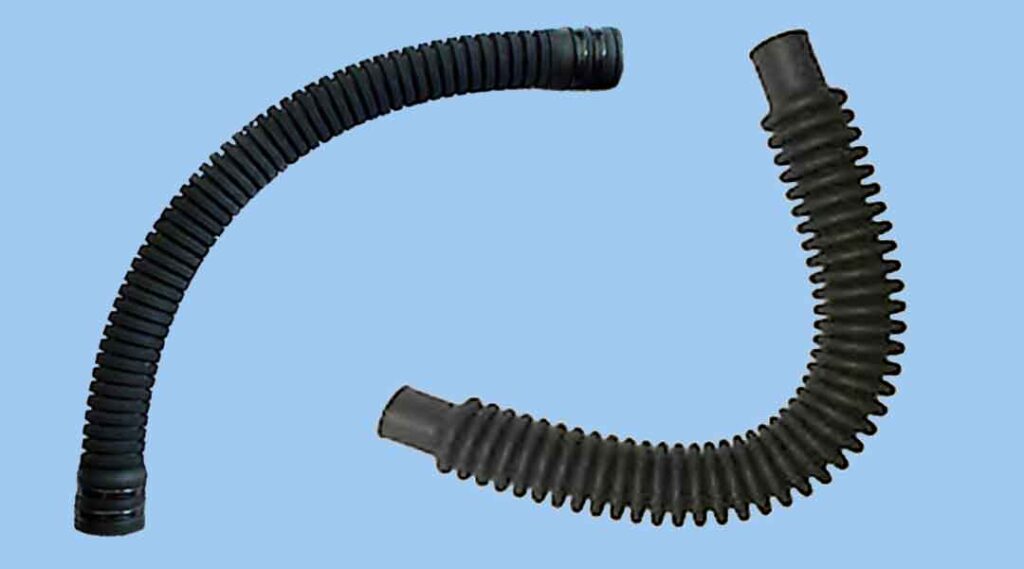
Hollis has taken an easier approach, fitting their wing with an oval-style flexible LPI corrugated hose. Personally, I prefer the flexible LPI approach; and that’s what I choose to fit onto most of my sidemount and backmount rigs. It always stays snug to the torso and always enables unimpeded oral inflation of the wing.
Both XDeep and Hollis supply high-quality K-type LPI modules with their wings.
Equipment stowage points
The Hollis Katana 2 features two low-profile D-rings sewn onto the left and right sides of the wing. These are intended as an attachment points for small accessories like spools. The XDeep Stealth Tec doesn’t have those attachment points; offering two crotch strap D-rings for accessory stowage. I’m undecided about Hollis’ wing D-rings. They seem convenient, but simultaneously diminish the refined streamlining and tangle-avoidance that sidemount systems endeavour to provide.
Items clipped onto the wings are liable to hang down at the sides, between the diver and their cylinders; which makes them less accessible and could lead to equipment getting snagged together if uncareful. The Hollis wing D-rings need to be used thoughtfully and with attention to detail in how you configure the equipment you’d attach there.
I have heard positive comments from sidemount CCR divers using the Katana 2 stating that the wing D-rings are especially useful when attaching CCR systems.
Dual-bladder redundant buoyancy option
Both systems offer a dual-bladder redundant buoyancy option on purchase. Sidemount lends itself ideally to a balanced rig configuration philosophy which can make redundant buoyancy superfluous for astute divers. That said, there are some higher-level technical divers who value the insurance of redundant buoyancy. The option is available to them with either BCD.
One aspect that I don’t like about the redundant bladder version of the XDeep Stealth Tec is that the dual-bladder LPI is permanently stitched into the wing. Whilst the primary LPI is removable by a conventional screw fitting, the diver cannot remove the secondary LPI for dives when it isn’t needed. I feel it would be more flexible and beneficial if the secondary LPI could be removed and blanked off whenever desired.
My Wing Score: XDeep 1 Hollis 0
Whilst the Stealth Tec and Katana 2 have very similar wings in most respects, and I do prefer Hollis’ corrugated hose; the issue of dump valve location is the deciding factor for me. I have zero use for a shoulder-mounted dump valve as I consistently dive in horizontal trim, whereas I very much appreciate the safety value of XDeeps’ lower-wing dump. Likewise, I cannot agree with Hollis’ positioning of the right-side inner wing dump; I see no practical benefits but some tangible drawbacks.
XDeep Stealth Tec vs Hollis Katana 2: Harnesses
The XDeep Stealth Tec harness
The XDeep Stealth Tec is sold with a minimalist webbing harness as standard, although a shoulder quick-release buckle version is available as a purchase option. It is not a single-piece harness; both shoulder straps and either side of the waist strap feed into retaining hardware on the lumbar plate.
This makes the harness very easy to adjust without introducing failure points and weaknesses; an important factor for those using high-powered DPVs and/or carrying heavy cylinder loads.
The harness utilizes rugged nylon lumbar and shoulder plates with an adjustable soft webbing spine strap connecting them. This ability to adjust the length of the system is critical for optimal configuration with aluminium cylinders.
As standard, it features two large 60mm D-rings on the shoulder straps, along with two large D-rings and two rubber sliding O-rings on the waist straps. XDeep offers low-profile 30mm D-rings as an option during purchase. I personally find the low-profile D-rings much more intuitive to use and more conducive to achieving the ideal cylinder trim.
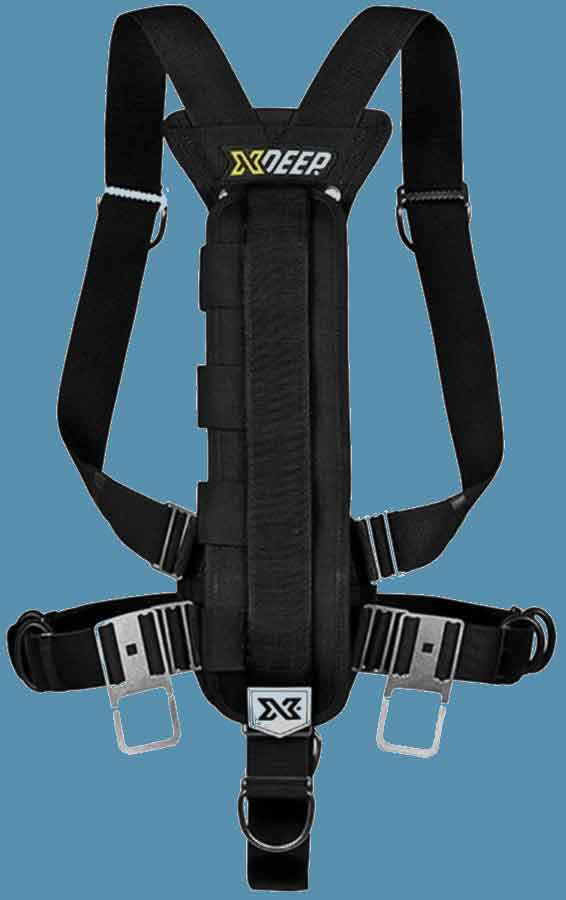
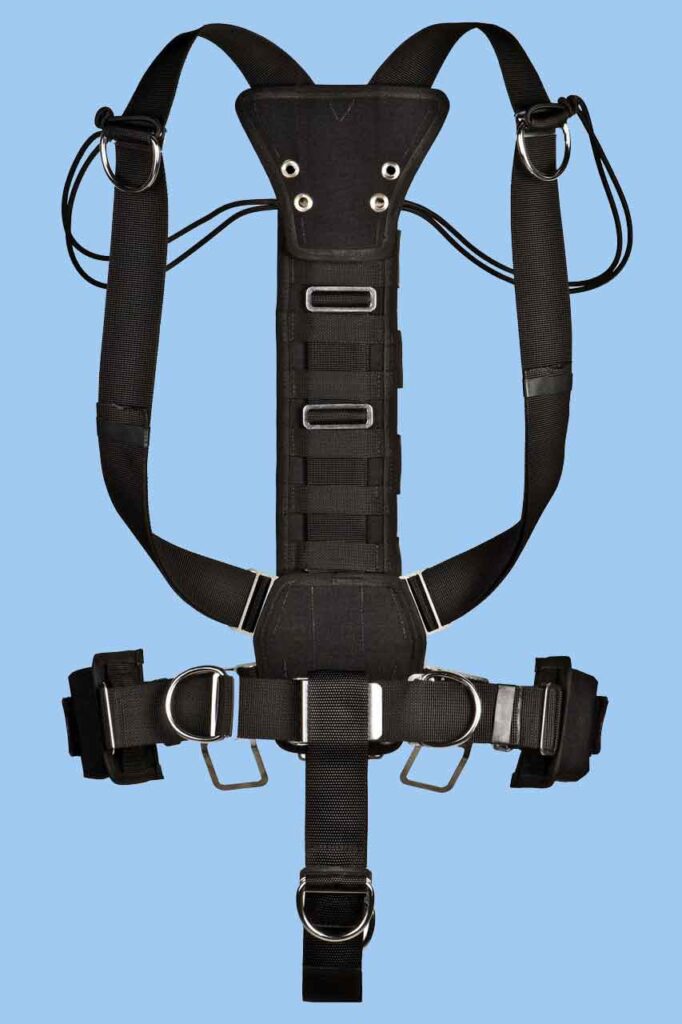
There are also two triangular retainers which can be used to secure the wing waist bungee; although using a longer waist bungee secured at the front with a bolt-snap is a far more preferable option for most divers. The system also has two offset square D-rings on the rear waistbelt for attaching a sidemount equipment stowage pouch.
The Stealth Tec doesn’t supply standalone retainers for the front attachment of the bungees to the shoulder straps. Whilst the user can improvise an attachment by making small sliding loops of 6mm bungee or 550-cord, I do feel that a fixed metal retainer is preferable for the majority of divers.
I don’t know many divers who like the sliding O-rings for cylinder attachment on the XDeep’s waist belt. If diving aluminium cylinders it is worthwhile either adding two extra D-rings for a fixed D-ring approach; or selecting the metal sliding D-rings as a purchase option upgrade.
Click here for an excellent XDeep configuration guide.
The Hollis Katana 2 harness
The Hollis Katana 2 has a less modular harness design with a one-piece soft nylon backplate instead of the traditional Mexican-style spine strap linking shoulder and lumbar plates.
However, it does incorporate a velcro adjustment system (“Quick Fit System”) above the lumber pad that allows the user to extend or shorten the spine length quickly. I feel that the velcro is less secure than XDeep’s webbing and metal spine system in a load-bearing section of the harness, but it certainly does avoid one of the more fiddly adjustment steps when configuring the XDeep.
The Hollis Katana 2 is supplied out-of-the-box with metal hardware to construct an H-style harness. Whilst less snug and secure for most divers, an H-style harness can be a blessing for those with a larger waistline or with shoulder injuries than impede their range of motion.
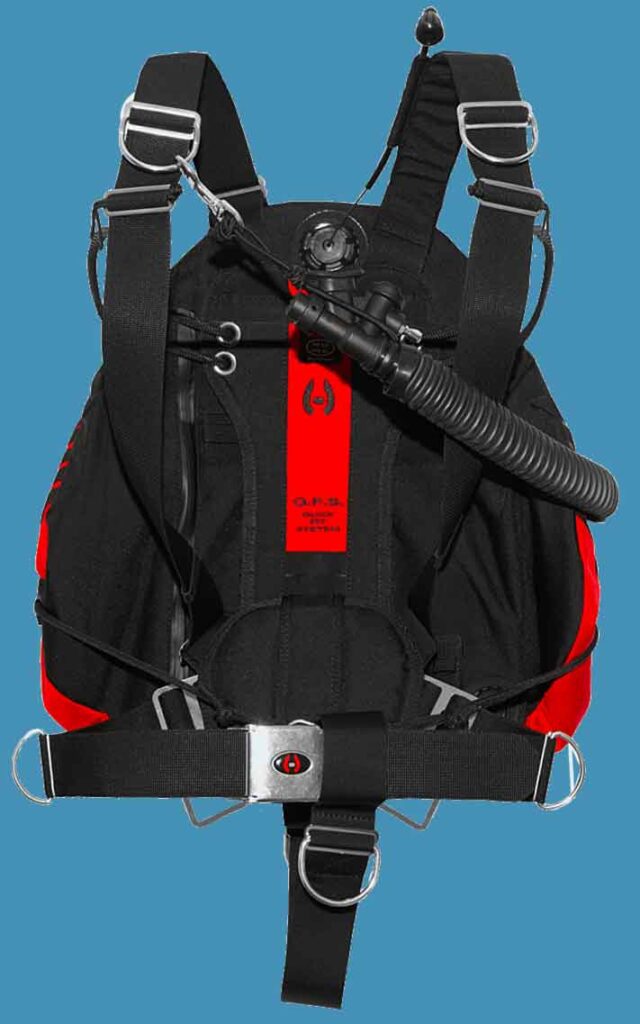
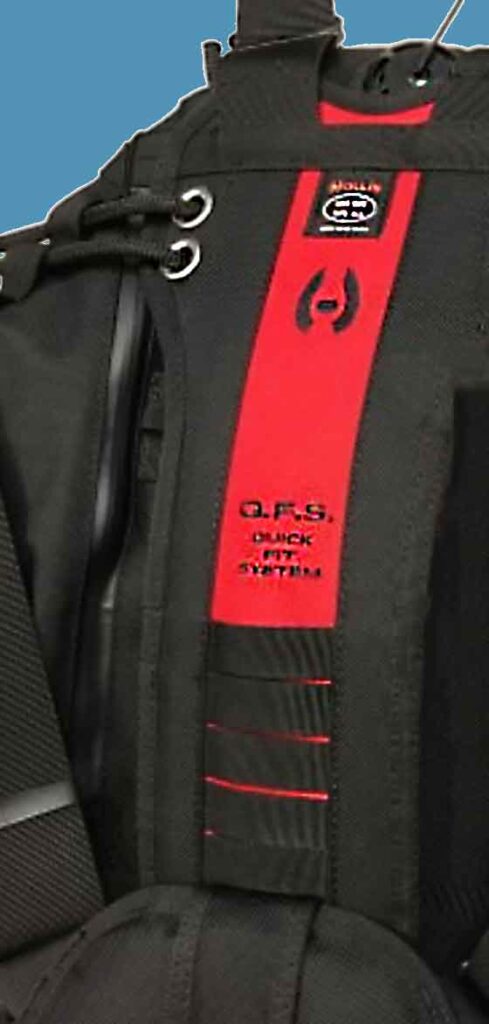
The H-style harness maximizes the space under the shoulder straps which, in turn, makes donning and removing the harness easier.
The XDeep Stealth Tec doesn’t offer that option, although it is relatively easy to source custom after-market hardware for a harness conversion.
The Hollis Katana 2 is supplied with two large 60mm D-rings on the shoulder straps, along with two large and two low-profile 30mm D-rings on the waist harness. Whilst I’d personally prefer all the waist hardware to be low-profile D-rings, the system is equipped to dive with aluminium cylinders out of the box. In contrast, the XDeep user will invariably want to replace the sliding O-rings with metal hardware.
The Hollis supplies metal retainers on the shoulder straps for secure loop bungee attachment and also has offset square D-rings on the rear waist webbing for pouch attachment. They include a chest strap in the box for divers who feel a need for that; although in years of teaching I’ve never encountered a diver who actually needed a sidemount chest strap. It falls into the superfluous clutter category for me; just included habitually because it’s become expected.
My Harness Score: XDeep 1 Hollis 1
Both the Stealth Tec and Katana 2 offer the same essential harness functionality for aluminium and steel cylinder diving.
The Hollis has slight advantages in adjustability, but there is some minor drawback in strength and ruggedness for having that convenience. My personal perspective is that I’ll only configure a harness once, but I’ll dive it thousands of times. I prefer ruggedness and longevity over saving a few minutes on one occasion during the BCD setup.
I’ve always felt that the XDeep Stealth Tec was somewhat incomplete out of the box because it doesn’t supply four metal waist D-rings or metal bungee retainers for the shoulder straps. My students typically have to purchase these separately to get their configuration optimized. They aren’t expensive or difficult to source extras, but the extra step to purchasing everything you need is a minor downside.
Overall, I think the harness designs are evenly balanced. Choosing between them is a matter of personal preference over smaller details.
XDeep Stealth Tec vs Hollis Katana 2: Bungees
The XDeep Stealth Tec bungees
The XDeep Stealth Tec comes supplied with a generous length (9m/29ft) of 6mm bungee cord. There are four grommet holes in the soft nylon shoulder plate to facilitate loop, independent or continuous bungee methods. There is also a small steel plate behind the nylon shoulder plate for bungee attachment; it can be used instead of, or with, the shoulder plate grommets.
The inside edge of the upper wing has three small nylon webbing loops on each side through which the bungees can be threaded. This works well to prevent the bungees from getting tangled and twisted; whilst also ensuring that loop bungees will run horizontally underneath the armpits – as befits an effective configuration.
The 6mm bungee is ideal for most diving cylinders but may struggle a little with the highest-capacity steel cylinders.
As mentioned in the harness section, XDeep doesn’t supply specific hardware for bungee setup on the shoulder webbing. This, I feel, is a significant oversight. Very few divers prefer the sliding bungee loop method, and the majority will resort to purchasing more appropriate hardware as an after-purchase.
The Hollis Katana 2 bungees
Hollis has always preferred oversized bungees with their sidemount BCDs. Thankfully the 8mm bungees supplied with the Katana 2 are a little more reasonable than the independent bungees supplied with previous SMS rigs. They are, nonetheless, slightly overkill for the majority of cylinders which average divers might use.
The bungees are pre-installed in loop configuration out-of-the-box; although alternative methods could be configured when setting up the rig. I’m not really sure why Hollis persists in pre-installing bungees on their sidemount BCDs; bungees need to be individually sized to the diver and that sizing process is best started from scratch.
My Bungee Score: XDeep 1 Hollis 0
XDeep supplies mid-strength bungees more suitable for the vast majority of sidemount divers, whereas Hollis seems to supply heavy-duty bungees based upon a smaller minority of heavy-cylinder users. That decision probably reflects a locational dive-community trend in the Florida caves but overlooks divers’ needs on a more universal worldwide basis.
I particularly like that XDeep supplies a generous amount of bungee and lets divers configure and size them from scratch. Having set up sidemount systems with hundreds of students over the years, I find pre-installed bungees more of a hindrance than a convenience. If it wasn’t so critical to individually size them, that wouldn’t be a problem. But they do need to be carefully sized to the diver.
XDeep Stealth Tec vs Hollis Katana 2: Weight Systems
Both the XDeep and Hollis utilize a spine weight system with velcro-secured weight pockets running from the neck to the lower spine. The Katana 2 accommodates 9kg (20lb) of weights in four pockets. XDeep offers a variety of weight pocket sizes, enabling divers to select what best suits their needs; whether that is lightweight tropical diving or cold-water diving in the thickest exposure suits. The largest XDeep spine weight system allows for 12kg (26 lbs) of weight.
The XDeep can also be ordered with accessory trim weight pockets that are specifically designed to secure onto the sidemount harness webbing. Hollis does sell general-purpose trim weight pockets, not specifically for sidemount harness attachments, and they are a separate order.
My Weight System Score: XDeep 1 Hollis 0
The variety of weight system options available with the XDeep Stealth Tec makes it the clear winner in this category. It offers divers a much more refined configuration for their specific needs; reducing bulk and weight when a smaller weight system is needed for warm-water travel diving, but with far greater capacity available for those who need substantially more ballast.
XDeep Stealth Tec vs Hollis Katana 2: Options
The XDeep has a much wider variety of options and upgrades available at the point of sale. Optional features like sliding waist D-rings, custom wing colors and personalized embroidery allow the buyer to create a far more individualized rig.
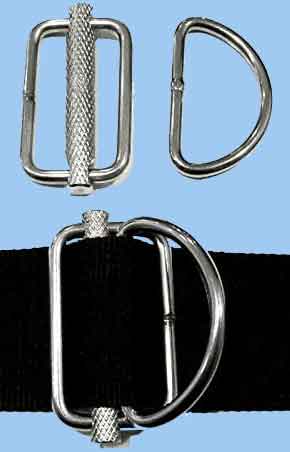

Hollis don’t offer any customization or upgrades with their BCD. A limited edition all-black version is available at the time of writing. Otherwise, everything is standard out of the box.
The days of “any colour you want as long as it is black” have gone; modern dive consumers appreciate making their dive kit special to themselves.
My purchase options score: XDeep 1 Hollis 0
If you want an individualized sidemount rig and more upgrade options at the point of sale, then XDeep has, by far, a lot more to offer. You can check out all of those options using XDeep’s online configuration tool.
XDeep Stealth Tec vs Hollis Katana 2: Price
The XDeep is ostensibly the cheaper system to buy, but prices do vary according to the region and have to account for shipping and import fees from the factory in Poland. The best price seems to be available if you order direct from the XDeep website and specify Poland as your location; paying in Zloty (PLN). You’ll have to pay for the shipping to your location.
Hollis manufacture in the USA, which avoids the expense of trans-Atlantic shipping and import taxes for US consumers. That saving can account for ~$150, based on the typical price I see XDeep Stealth Tec listed for in the USA.
Both manufacturers have a global dealership network and it’s possible to buy either sidemount BCD in many countries.
My Price Score: XDeep 1 Hollis 1 – it varied on location
The best price option may be determined by your location. Hollis will be cheaper in the USA. XDeep can work out cheaper in Europe.
My choice: Stealth Tec or Katana 2?
Honestly, I’d be content to dive either of these sidemount BCDs; they are both very good. The majority of my diving is in the tropics using aluminium cylinders and both systems are capable of conforming to the configuration principles needed to make that work optimally. Both BCDs are also more than capable of supporting the trimix and overhead environment diving that I teach as my day-to-day work.
Overall, I feel that the XDeep Stealth Tec is the more refined and performance-focused system. It doesn’t make any compromises out of design habits and regional-specific traditions or satisfy the imagined needs of less experienced sidemount divers. I feel that the Katana 2 has some superfluous features, and I’m brutally minimalist at heart. I’d be compelled to cut away the valueless clutter.
The dump valves on the Katana 2 would annoy me. I’d probably blank off the shoulder dump and cut away the extended dump cord. In decades of diving, much of it teaching tech and overhead environment, I have never once wished for or needed, a shoulder dump valve. In contrast, XDeep located their dump valve exactly where it’s needed for worst-case scenarios. It has the potential to help avoid uncontrolled buoyant ascents. That can save divers from trips to the compression chamber, or worse. For decompression diving in the ocean, the benefit is a no-brainer.
Personally, I don’t care about decorating and beautifying my rig, but I do believe that high-visibility colours are a safety improvement for overhead and low-visibility diving. The XDeep would enable me to apply that belief by choosing a bright orange or reflective yellow coloured wing material.
All things considered, I would personally choose the XDeep Stealth Tec. It’s the best match for my diving needs, equipment philosophy, and better promotes the diving proficiencies that I encourage students to develop.
Do you own, or have experience diving, either of the two systems? Share your experiences in the comments section below!
About The Author

Andy Davis is a RAID, PADI TecRec, ANDI, BSAC, and SSI-qualified independent technical diving instructor who specializes in teaching sidemount, trimix, and advanced wreck diving courses.
Currently residing in Subic Bay, Philippines; he has amassed more than 10,000 open-circuit and CCR dives over three decades of challenging diving across the globe.
Andy has published numerous diving magazine articles and designed advanced certification courses for several dive training agencies, He regularly tests and reviews new dive gear for scuba equipment manufacturers. Andy is currently writing a series of advanced diving books and creating a range of tech diving clothing and accessories.
Prior to becoming a professional technical diving educator in 2006, Andy was a commissioned officer in the Royal Air Force and has served in Iraq, Afghanistan, Belize, and Cyprus.
In 2023, Andy was named in the “Who’s Who of Sidemount” list by GUE InDepth Magazine.
Purchase my exclusive diving ebooks!
Originally posted 2022-12-27 23:23:24.








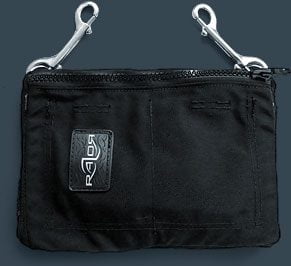




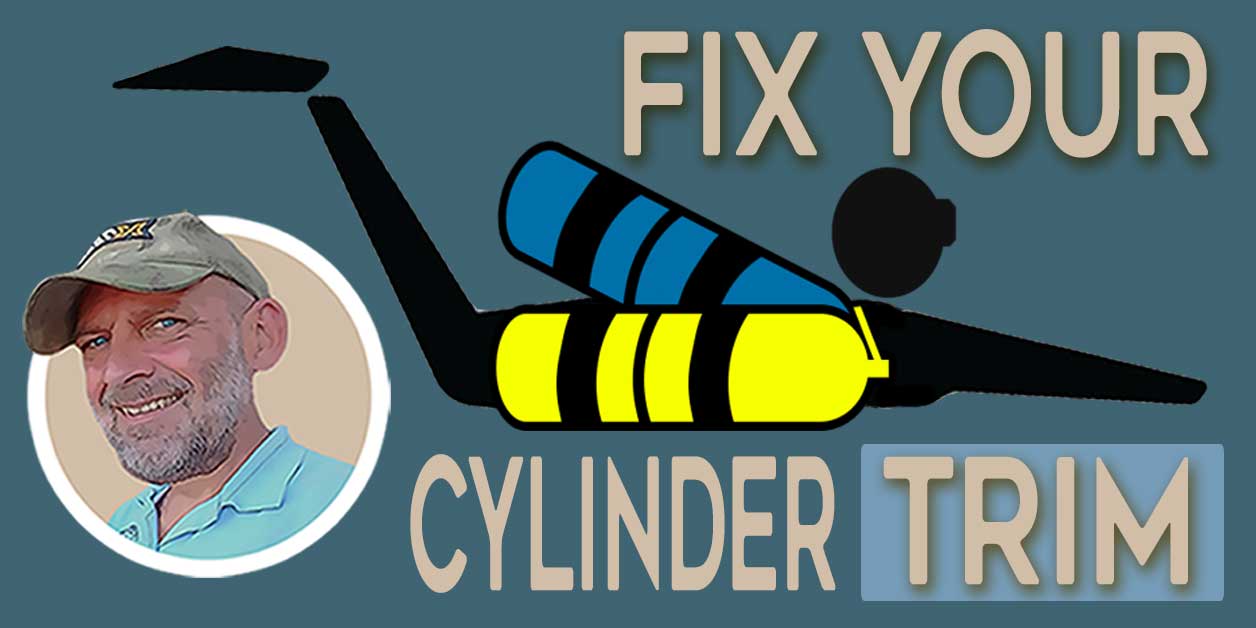


I have both and use the Hollis for the Sidewinder. I love my Xdeep as its minimal and such a snug fit. But for the Sidewinder the shoulder toggle for the valve is a must for me. I’d never be able to reach the valve on the Xdeep with the Sidewinder fitted.
Still the fit of the XDeep is awesome ??
I think that’s the essence of my review; the XDeep Stealth has an edge for all-around diving; in warm and cold water, whereas the Katana2 has incorporated features that bias it slightly better towards steels/drysuits in cold or temperate water. The Katana is a big step forward from previous Hollis designs. It integrates Mexican-style functionality in the harness and wing design to enable warm-water divers to use aluminium cylinders using best practices and a principled approach. Either does a great job; my article had to delve into very fine details to distinguish comparative strengths and weaknesses.
I own both and I dive both. I love the xDeep for AL80 wetsuit diving and it will be the kit I take to dive the Mexico caves in April. Purchase a few specialized bits and pieces from Sump UK and the xDeep Stealth 2.0 becomes a complete package. When wearing a drysuit, I like an H-Harness and the Katana 2 supports that out of the box ( I also personally like a chest strap when using an H-Harness). I even like the provided bungees. They are perfect for the steel cylinders I dive when dry. I don’t think I have single “aftermarket” accessory on the Katana 2…It came with everything needed (although another Sump UK purchase would add some refinement!). The dump valve locations make no difference to me. I also think that when you have hundreds of dives on one unit and much less in the other there is a natural bias. Either unit is excellent and becoming quite common in Florida cave country. I am waiting to see the challenge from Dive Rite in 2023…they are getting close with the Nomad LS, but still not there yet. Will the new kit get them closer to the Hollis or xDeep? Time will tell!
Thanks Jeff. I’ve actually just updated the article to reflect Edd’s description of his design input into the K2. The relevant podcast interview is now embedded in the article. Whilst I understand what you describe, suit squeeze occurs when descending; not a time when operating the dump valve is necessary. In contrast, when ascending, access to the dump valve is critical. In wings that retain the majority of buoyancy on the lower torso, positive buoyancy exerts force to rotate the diver’s legs upward. There are tangible safety implications to that dynamic; especially when combined with depleted aluminium cylinders. I can accept the specialist CCR niche benefit of shoulder dump inclusion, but I feel the absence of a lower wing dump is safety-detrimental to the majority of sidemount divers (who’ll probably be in warm-water and using aluminium cylinders).
Nice review. I do find that the xDeep dump is great if I’m diving in a wetsuit, but in a drysuit it’s less than ideal (especially with large steels such as LP95s). Even a tiny bit of squeeze happening can limit the movement range of your arms in a drysuit. That small change can make reaching the dump with either arm impossible until the squeeze is alleviated. That means having to take care of the squeeze (that you probably wouldn’t otherwise notice) before you can deal with the need to deflate the wing.
The issue is so common with cave divers in Florida that modifying the wing is a common practice (Edd Sorenson sold, or maybe still sells, these with his modification installed). I believe that is why the K2 has the kidney dump instead of putting it in the same place as the stealth.
The upper dump also is useful if ascending in a tight cave where you may be head up, so the dump on the bottom of the wing is now below the air and less effective than a dump at the top of the wing. While not a common scenario for most divers, it’s one I’ve found myself in occasionally, so having that as an option appeals to me.